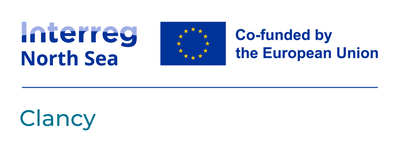CLANCY: Management of non-native invasive Chinese mitten crabs
GOAL
Improve habitat quality and climate adaptivity of freshwater ecosystems through management of alien invasive aquatic invertebrates.

CLANCY: what and why
The Chinese mitten crab has also been found in our regions, namely in the North Sea and the Baltic Sea, since 1900. In recent years, the population has begun to increase exponentially, with numbers estimated to be in the millions and with no peak yet in sight.
The Flanders Environment Agency (VMM) already installed a crab trench in 2018 to catch young mitten crabs and curb their increasing numbers in our waters. However, the distribution of the species is not limited to our North Sea and rivers in Flanders. This has provided the impetus for the European CLANCY project, which focuses on cross-border cooperation for the control and containment of the Chinese mitten crab.
The project is a collaboration between Belgium, Germany, France and Sweden and will run until 2028. Its objectives include drafting a comprehensive inventory, the creation of a database, mapping the genetic origin of Chinese mitten crab, and cooperation between the countries' environment agencies.
Objectives
|
| The different countries will share and collect available data on crab populations, their distribution, and their impact on freshwater ecosystems in a new shared database. |
|
|
The countries will monitor and manage Chinese mitten crabs thanks to the use of traps. The design of the trap is based on the design of the trap that the VMM installed in Grobbendonk in 2018, but is adapted to local conditions (such as river or creek width, population status, hydrology, etc.). The trap set-up allows for both population management and monitoring. The traps will be set at bottleneck sites on the migration routes of the Chinese mitten crab for catch optimisation. Special attention is being paid to avoiding by-catch of other invertebrate species. Ecological monitoring will also take place in reference areas without traps. This enables the impact on habitat quality (e.g. aquatic and wetland vegetation, biodiversity, sediment stability, and river hydrology) to be monitored. |
|
| By performing genetic analyses on the captured crabs, it will be possible to make a thorough assessment of the cross-border distribution and connectivity of the population. |
|
| Roadmaps for cross-border control of invasive species will be prepared based on the results of the project. This will involve a co-creative approach, involving local stakeholders so that the roadmaps and analyses can be used directly by key users. CLANCY therefore contributes to the management of coordinated cross-border species control adapted to local and regional needs and conditions. |
Role of the VMM
The VMM is lead partner and will build an updated version of the current trap. The invasive crabs are captured in them, after which samples are delivered to the University of Antwerp as part of genetic research.
| Project partners | |
|---|---|
| Belgium |
Flanders Environment Agency (coordinator) Province of East Flanders University of Antwerp |
| Germany |
Alfred-Wegener-Institut, Helmholtz-Zentrum für Polar- und Meeresforschung Technische Universität Dresden |
| France |
Groupe d'Etude des Milieux Estuariens et Littoraux Cellule du Suivi du Littoral Normand |
| Sweden | Högskolan i Skövde Sverige |
Type of project: Interreg North Sea
Duration: May 2023 – April 2028
 Inventory and setting up a database
Inventory and setting up a database Crab trench
Crab trench Genetic analysis
Genetic analysis Cross-border control
Cross-border control


